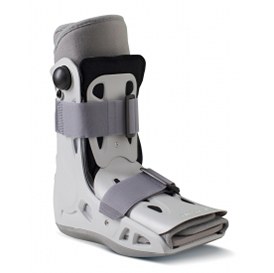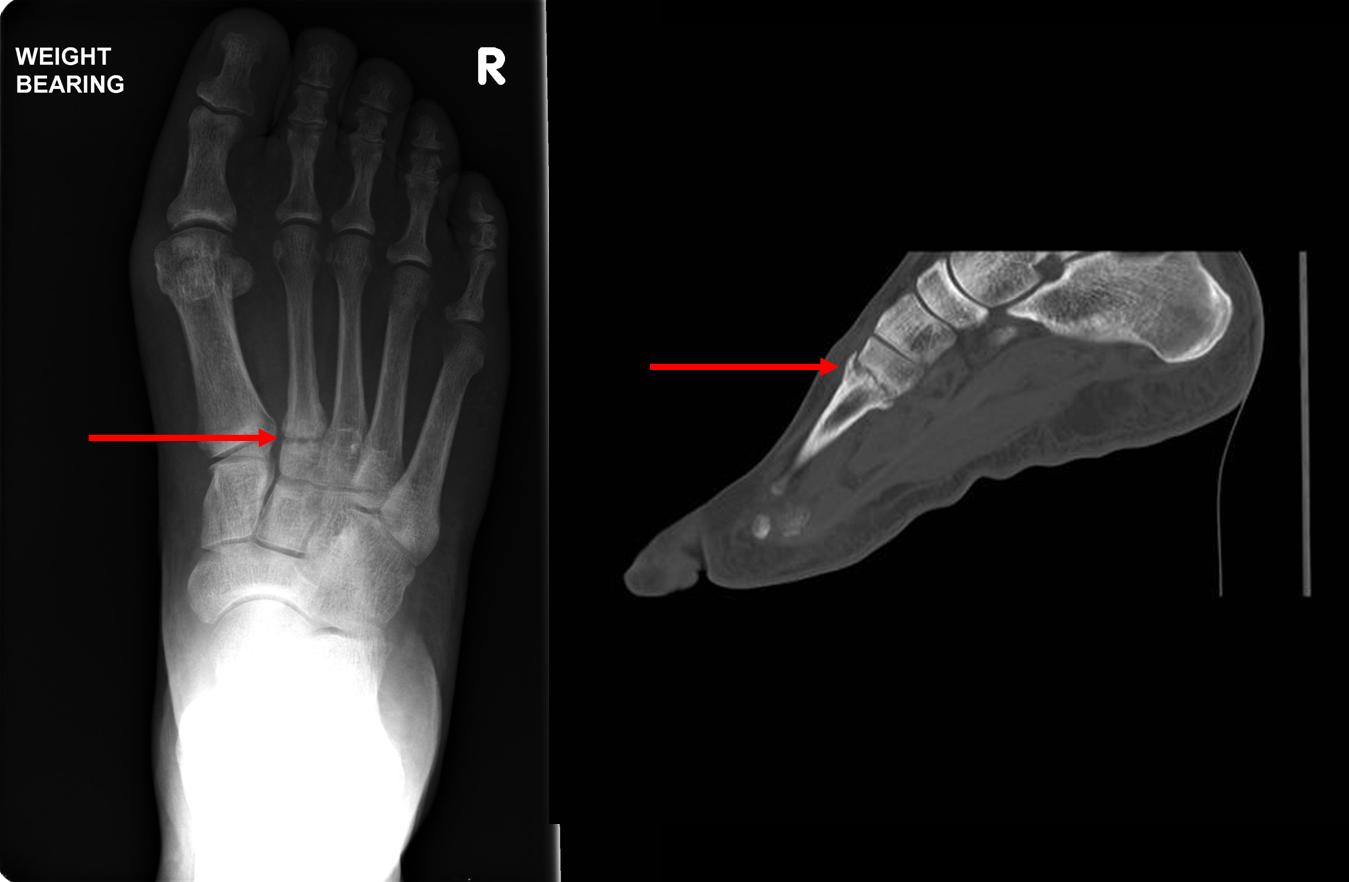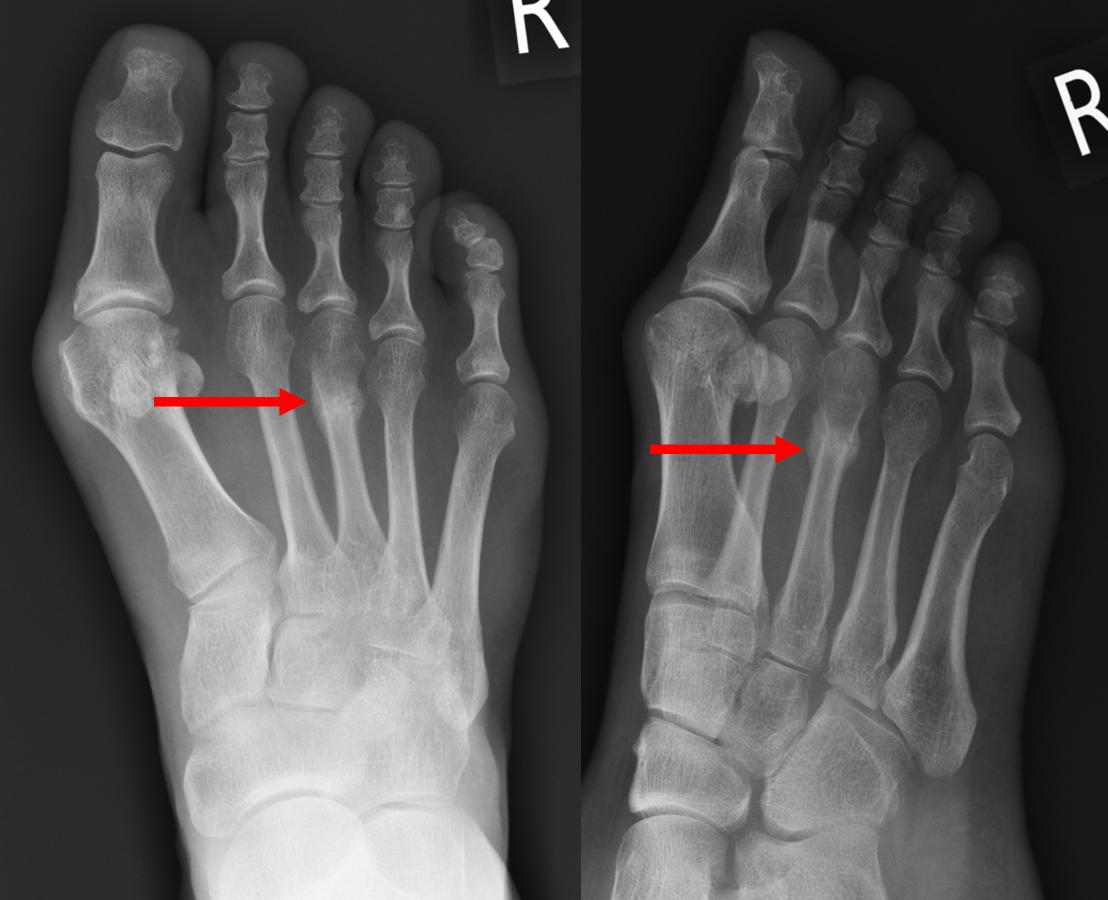Stress Fractures
 Read What Mr Gordon’s Patients Are Saying
Read What Mr Gordon’s Patients Are Saying
A stress fracture is a small crack in the bone which occurs from an overuse injury. It commonly develops in the bones of the lower leg (tibia and fibula) and foot (metatarsals and other foot bones).
Stress fractures may be caused by a rapid increase in the intensity of exercise. They can also be caused by repetitive impact on a hard surface, improper footwear, and increased physical activity. Athletes participating in certain sports such as running, basketball, tennis or gymnastics are at a greater risk of developing stress fractures. During these sports, the repetitive stress of the foot on a hard surface causes trauma. An athlete with inadequate rest between workouts can also develop a stress fracture.
Females are at a greater risk of developing stress fractures than males, and may be related to a condition referred to as “female athlete triad”. It is a combination of eating disorders, amenorrhea (irregular menstrual cycle), and osteoporosis (thinning of the bones). The risk of developing stress fractures increases in females if the bone weight decreases.
The most common symptom is pain in the foot, ankle or lower leg, which usually gets worse during exercises and decreases upon resting. Swelling, bruising, and tenderness may also occur at a specific point.
Diagnosis
My Gordon will diagnosis the condition after taking a detailed history and examining you. Some diagnostic tests such as an X-ray, CT scan, MRI scan or bone scan may be required to confirm the fracture.
A second metatarsal (foot) stress fracture (arrow)
Left image -xray, right image – CT scan
Healing 3rd Metatarsal Stress Fracture
Treatment
Stress fractures can usually be treated without surgery which includes activity modification and anti inflammatories. Re-injury can also occur without allowing the stress fracture to completely heal.
Mr Gordon uses the novel Exogen ultrasound device to help heal stress fractures.
Protective footwear may be recommended which helps to reduce stress on the foot. Mr Gordon may apply a removable boot to the leg to immobilise it, which helps to reduce the stress. Crutches may be used to reduce the weight on the leg until the stress fracture has healed.

AirSelect Short Walking Boot by Aircast
Surgery may be required if the fracture has not healed completely by non-surgical methods. Mr Gordon may use internal fixation (screws and/or plates).
Some of the following measures may help to prevent stress fractures:
- Ensure to start any new sport activity slowly and progress gradually
- Cross-training: Use a variety of exercises to achieve your goals. For example you may run on even days and ride a bike on odd days, instead of running everyday, to reduce the risk of injury from overuse. This limits the stress occurring on specific muscles as different activities use muscles in different ways.
- Ensure to maintain a healthy diet and include calcium and vitamin D-rich foods in your diet
 Call for an Appointment
Call for an Appointment 







